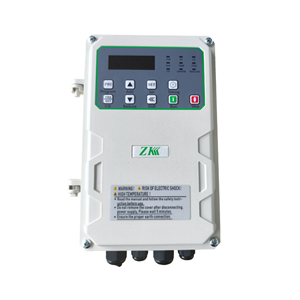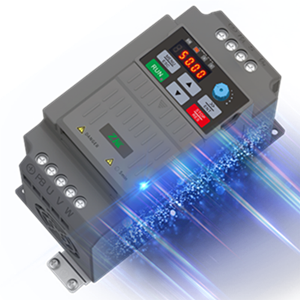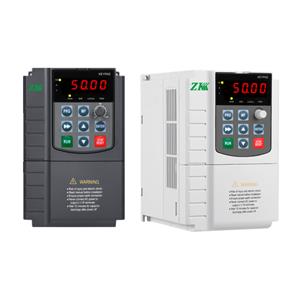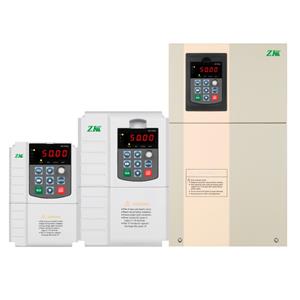What happens when the solar panel's Isc exceeds the maximum input current of the solar pump inverter?
In solar pump inverters, it's safe for Isc to exceed the maximum input current because the inverter operates at Imp, not Isc, to prevent overload.
1. What is Isc in a pumping system solar panel?
Isc, or short-circuit current, is the maximum current drawn when the positive and negative terminals of a solar panel are short-circuited under standard test conditions (STC: 1000W/m² irradiance, 25°C cell temperature, AM1.5 spectrum). It represents the peak current a PV array can output under extreme conditions (such as a short-circuit fault under high irradiance) and is often used to calculate safety margins in system design. For example, the Isc of a typical 400-600W module is approximately 10-14A.
In pumping systems, Isc is a key parameter for evaluating the matching between the PV array and the inverter. Unlike the maximum power point current (Imp), this value doesn't directly impact daily output, but rather ensures that inverter components (such as MOSFETs or capacitors) aren't overloaded during system faults (such as short circuits). The ZK200-P series inverter supports a wide Voc range (175-750VDC), allowing users to flexibly configure the array based on Isc. However, Isc must be kept within the inverter's short-circuit current rating to comply with NEC 690.8.
2. What is the maximum input current of a solar pump inverter?
The maximum input current of a solar pump inverter typically refers to the rated maximum DC input current (Max Input Current) of its MPPT channel, which limits the normal operating current (Imp) of the PV array. For the ZK200-P series, according to the product specification sheet, this value varies by model and voltage level:
ZK200-1T series (110V pump): 7.0A for the 0.75kW model and 9.6A for the 1.5kW model.
ZK200-2T Series (220V pump): 0.4kW is 2.3A, 0.75kW is 4.0A, 1.5kW is 7.0A, and 2.2kW is 9.6A.
ZK200-4T Series (380V pump): 0.4kW is 1.5A, 0.75kW is 2.5A, 1.5kW is 3.8A, and 22kW is 45A.
In addition, the inverter has a short-circuit current rating (Isc) to verify that the array Isc does not exceed the threshold (typically a safety margin of 1.25 times the maximum input current). The ZK200-P's short-circuit protection design ensures system stability under high irradiance and achieves efficiency of up to 99.8%. Users can monitor real-time current through the FGAppStudio tool to avoid exceeding the limit.
3. Why does the Isc of a solar pump inverter exceed the maximum input current?
The main reason for Isc exceeding the maximum input current is overprovisioning the PV array, which aims to maximize yield in low-light conditions while neglecting to match peak light conditions. Specifically:
High irradiance and temperature effects: On a clear summer afternoon, when irradiance exceeds the STC, Isc can increase by 10-20%. For example, a string of modules with an Isc of 10A may reach 12A under actual conditions.
Array design optimization: To compensate for cloudy days or low morning light, users often add more modules, inflating the total Isc (DC/AC ratio to 1.5-1.75). In pump systems, this is common on remote farms pursuing full-day irrigation.
Advances in module technology: Modern half-cut/bifacial modules have higher Isc (12-14A/module), which can easily exceed the limit if the inverter is not properly sized.
The ZK200-P series' PQ curve and custom functions automatically calculate flow rate and energy yield, helping users simulate Isc and avoid design errors.
What happens when Isc exceeds the maximum input current?
Minor overshoots (Imp exceeds 20% of the maximum input current) typically result in energy clipping: The inverter limits the current to the rated value through the MPPT algorithm, wasting 5-15% of the solar energy at peak times, manifesting as a "flat-top" power curve. For a 5kW pump system, this translates to several hours of lost pumping per day, impacting irrigation efficiency.
Severe cases (such as Isc exceeding the short-circuit rating):
Overheating and shutdown: Excessive current overloads the bus or fuses, triggering thermal protection and causing random tripping. In a 3HP pump project in Rajasthan, India, an MPPT overload under high irradiation disrupted irrigation, affecting 200 farmers.
Module damage: Low-end inverters can burn out diodes or capacitors, or even cause fires, especially in dusty farm environments.
Warranty voiding: Manufacturers like SMA and our company require strict adherence to Isc limits; exceeding these limits voids the warranty.
ZK200-P has built-in overcurrent, low power and dry-run protection, and can automatically sleep when Isc exceeds the limit to prevent damage.
Prevention Guide and ZK200-P Advantages
To prevent ISC exceeding the limit:
Accurate Design: Total ISC = Module ISC × Number of Strings × 1.25 ≤ Inverter Max Input.
Fuse Protection: Add a 1.25 × Max Current fuse per channel to comply with NEC standards.
Choose the ZK200-P: Its 99.8% efficiency, wide input range (90-800 VDC), one-button operation, compatibility with asynchronous and synchronous pumps, and support for Bluetooth/GPRS remote monitoring.
Maintenance Monitoring: Track ISC using the app for timely adjustments.




